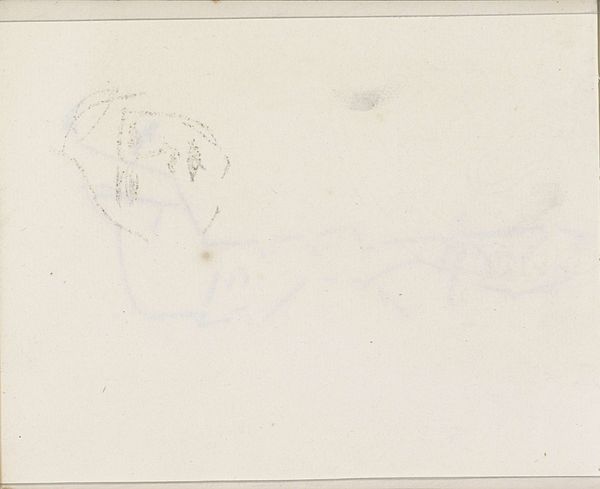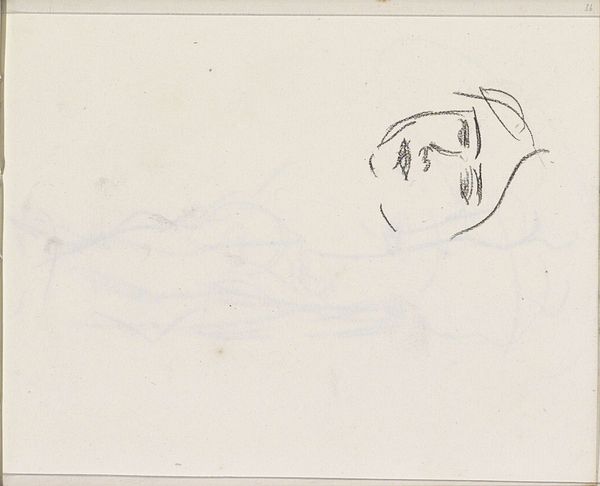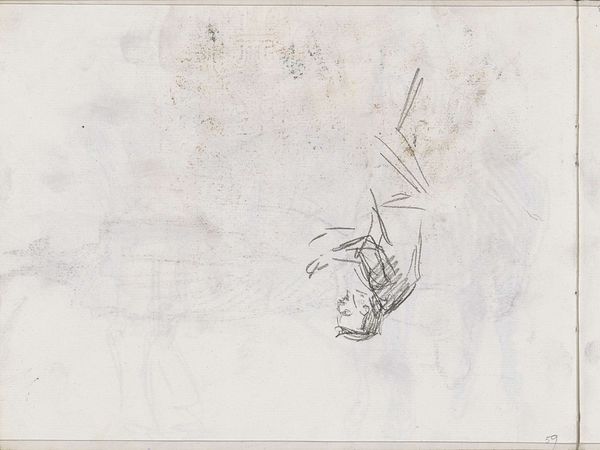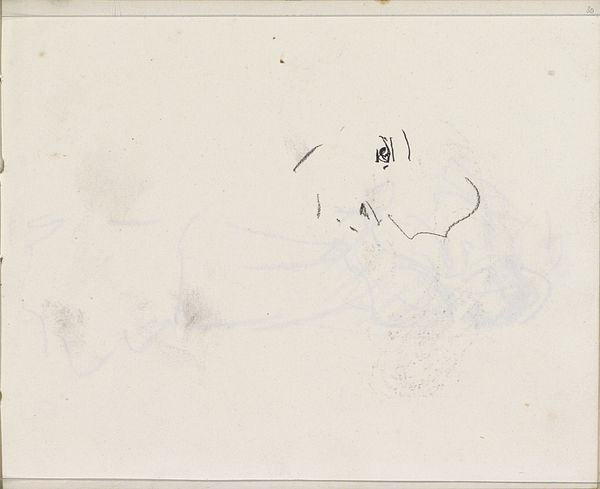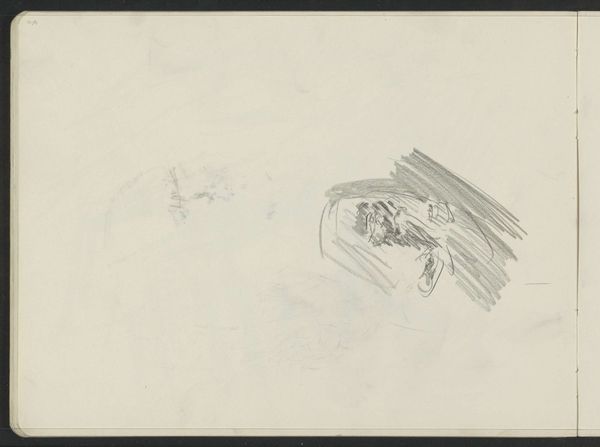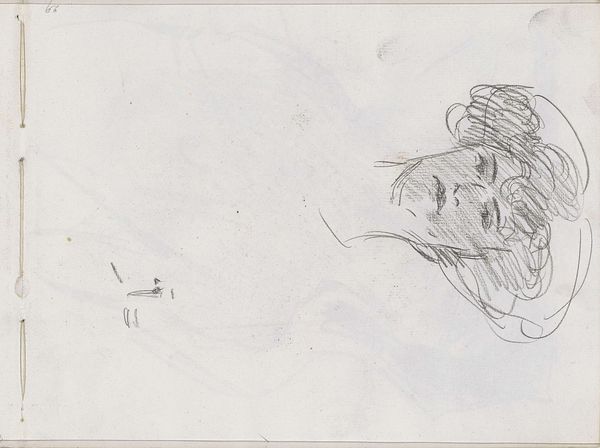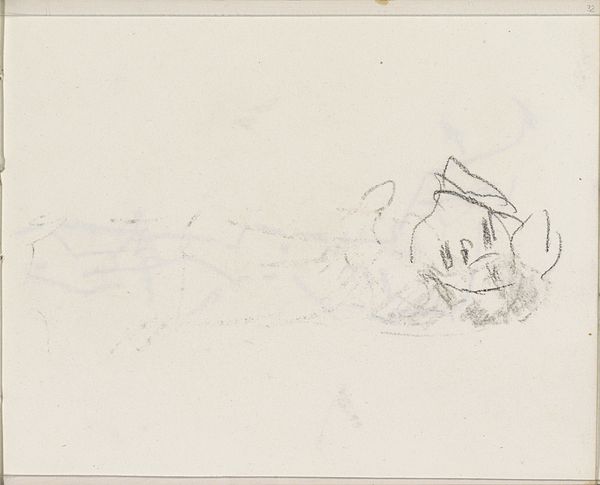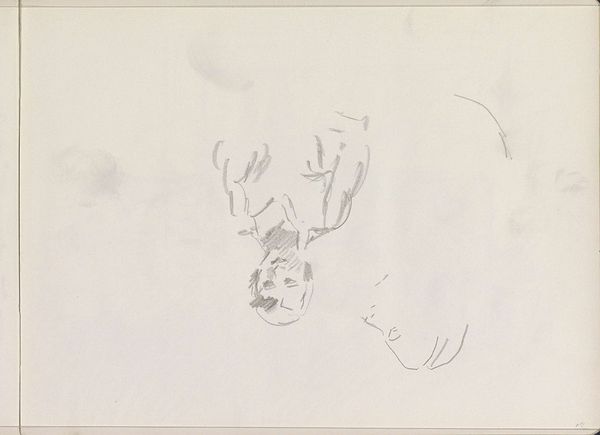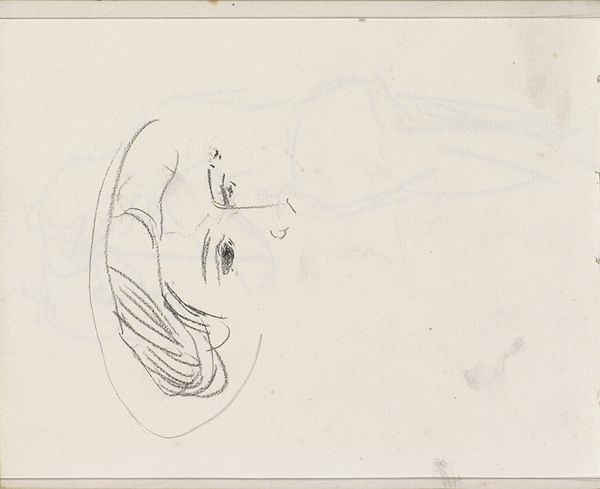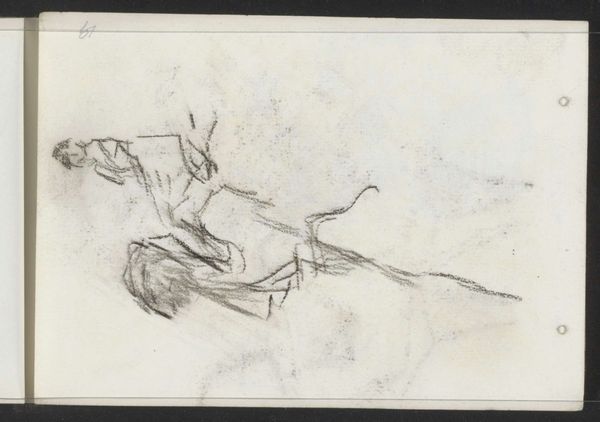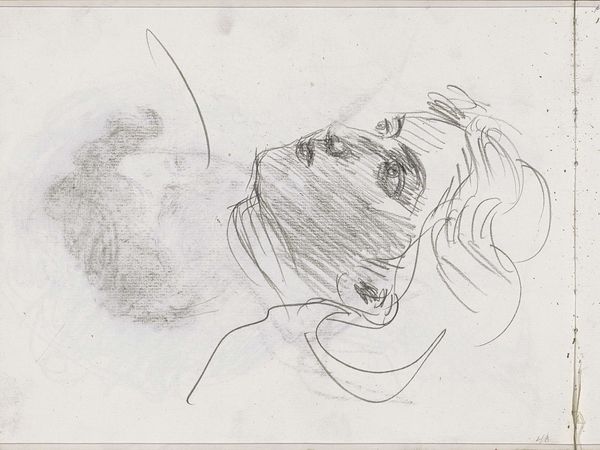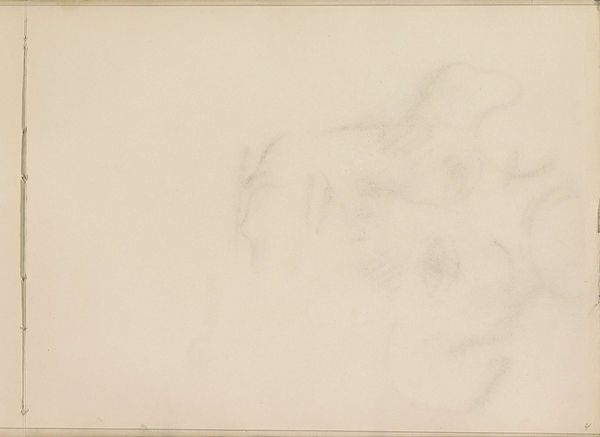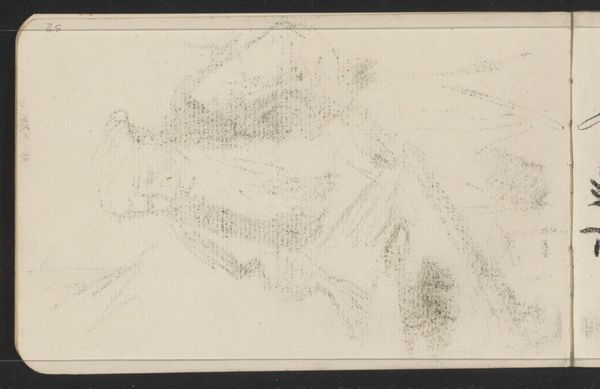
Copyright: Rijks Museum: Open Domain
Curator: Let's turn our attention to "Gezicht van een vrouw," or "Face of a Woman," a pencil drawing housed here at the Rijksmuseum. The work is attributed to Isaac Israels and is estimated to have been created sometime between 1875 and 1934. Editor: It looks like a ghost caught mid-thought. Faint lines, a flurry of activity mostly around the eyes, then fading...it's got a restless energy, doesn't it? Almost like a rejected idea from a sketchbook, but one brimming with untold stories. Curator: It’s an intriguing piece when viewed within the context of Israels' broader work. Often associated with Impressionism, he moved within circles that were examining modern life and its expressions. The very unfinished nature, the apparent spontaneity, could be interpreted as a reflection of the fleeting nature of modern experience. Who was this woman, and what significance might her image, captured so transiently, hold in relation to societal structures and representation? Editor: Maybe it’s the wabi-sabi of portraiture, you know? Imperfect, incomplete, and that’s where its beauty lies. What if that incompleteness is what makes it so resonant, forcing us, the viewers, to complete the portrait ourselves, to imagine her story, her life? Curator: I agree that incompleteness here becomes an open door to interpretation. You see it in relation to personal meaning, I see its connection to an aesthetic that resists rigid representation in favour of fluid experience—and maybe that reveals just how connected we all are. It gives viewers license, permission almost, to actively co-create meaning. Editor: Absolutely! We’re all filling in the blanks with our own histories and biases. Art, even a simple sketch like this, becomes this incredible collaborative project between artist and audience across time. Curator: Precisely. This sketch prompts crucial questions around agency and the act of looking, a dynamic pertinent in any era, but especially when viewed through our current intersectional lenses. Editor: It reminds me that every artwork—every mark on paper, every daub of paint—is an invitation. A chance to play, to ponder, to connect with someone long gone or something deep inside us. Curator: A valuable reminder to bring into our engagement with all artworks. Thanks.
Comments
No comments
Be the first to comment and join the conversation on the ultimate creative platform.
